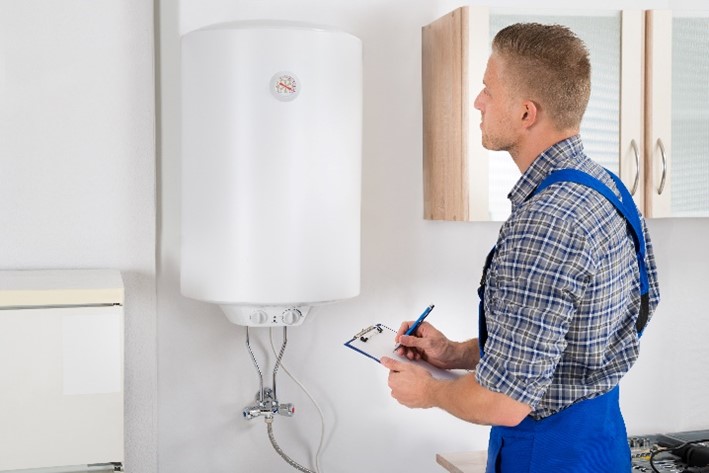Almost everyone will have his or her own beliefs involving Tips on Maintaining a Water Heater.

Warm water is vital for day-to-day comfort, whether it's for a revitalizing shower or washing recipes. To ensure your warm water system runs efficiently and lasts much longer, regular upkeep is vital. This short article gives useful pointers and insights on exactly how to maintain your home's hot water system to stay clear of disruptions and expensive repairs.
Introduction
Keeping your home's hot water system may appear challenging, yet with a couple of easy actions, you can ensure it operates efficiently for several years to come. This overview covers every little thing from understanding your warm water system to do it yourself upkeep tips and understanding when to call professional assistance.
Significance of Preserving Your Warm Water System
Regular maintenance not only expands the life-span of your hot water system however additionally guarantees it operates efficiently. Ignoring upkeep can bring about decreased effectiveness, greater power costs, and even premature failure of the system.
Signs Your Hot Water System Requirements Upkeep
Recognizing when your hot water system needs interest can stop significant concerns. Keep an eye out for signs such as inconsistent water temperature, unusual sounds from the heating unit, or rustic water.
Purging the Hot Water Heater
Purging your hot water heater gets rid of debris build-up, improving efficiency and prolonging its life.
Monitoring and Changing Anode Rods
Anode poles protect against deterioration inside the tank. Inspecting and replacing them when worn out is essential.
Complex Issues Requiring Professional Help
Examples include major leaks, electrical troubles, or if your hot water heater is continually underperforming.
Regular Specialist Upkeep Perks
Specialist maintenance can include thorough examinations, tune-ups, and guaranteeing compliance with safety standards.
Evaluating and Readjusting Temperature Level Setups
Changing the temperature settings ensures optimum efficiency and security.
DIY Tips for Maintenance
You can perform numerous maintenance jobs on your own to maintain your hot water system in leading problem.
Checking for Leaks
Regularly evaluate pipelines and connections for leaks, as these can bring about water damages and higher bills.
Recognizing Your Warm Water System
Before diving into upkeep jobs, it's useful to understand the standard elements of your hot water system. Typically, this consists of the water heater itself, pipes, anode poles, and temperature controls.
Monthly Upkeep Tasks
Routine monthly checks can aid catch minor concerns before they escalate.
Checking Pressure Alleviation Valves
Checking the pressure safety valve ensures it functions properly and avoids too much pressure buildup.
Shielding Pipes
Shielding hot water pipelines minimizes heat loss and can conserve energy.
When to Call a Specialist
While DIY upkeep is useful, some concerns need professional competence.
Conclusion
Normal maintenance of your home's warm water system is important for performance, longevity, and expense financial savings. By complying with these pointers and understanding when to look for professional assistance, you can make sure a reliable supply of warm water without unanticipated interruptions.
How to Maintain an Instant Hot Water Heater
Before tinkering with your hot water heater, make sure that it’s not powered on. You also have to turn off the main circuit breaker and shut off the main gas line to prevent accidents. Also turn off the water valves connected to your unit to prevent water from flowing into and out of the appliance. 2. When you’re done, you have to detach the purge valves’ caps. These look like the letter “T” and are situated on either side of the water valves. Doing so will release any pressure that has accumulated inside the valves while at the same time avoid hot water from shooting out and burning your skin. 3. When the purge valves’ caps are removed, you have to connect your hosing lines to the valves. Your unit should have come with three hoses but if it didn’t, you can purchase these things from any hardware or home repair shops. You can also get them from retail stores that sell water heating systems. Read the user’s manual and follow it to complete this task properly. When the hosing lines are connected, open the purge port’s valves. 4. You should never use harsh chemical cleaners or solutions when cleaning your unit. Make use of white vinegar instead. It should be undiluted and you’ll probably use about 2 gallons. 5. Now flush your water heater. This task should probably take about 40 minutes. We can’t give you specific directions for this because the procedure is carried out depending on the type, model and brand of your heater. With that being said, refer to the user’s manual. 6. When you’re done draining the unit, you have to turn off the purge port valves again. Remove the hosing lines that you earlier installed on each of the water valves. Put the valve caps (purge port) back in their respective places and be very careful so as not to damage the rubber discs that are found inside these caps. 7. Now that everything’s back in place, check your user’s manual again to find out how to reactivate your water heating system. 8. Once it is working, turn one of your hot water faucets on just to let air pass through the heater’s water supply pipes. Leave the tap on until water flows smoothly out of it. https://www.orrplumbing.com/blog/2014/september/how-to-maintain-an-instant-hot-water-heater/

We are very involved in What Kind of Maintenance Do Water Heaters Need? and I'm hoping you enjoyed reading my blog post. Sharing is nice. You just don't know, you might be doing someone a favor. Thank you for your time. Return soon.
This Website